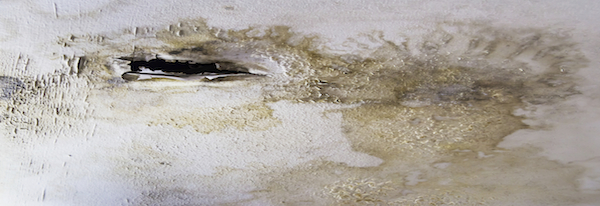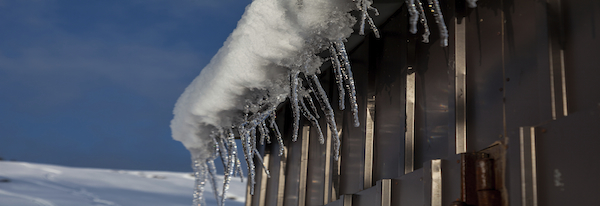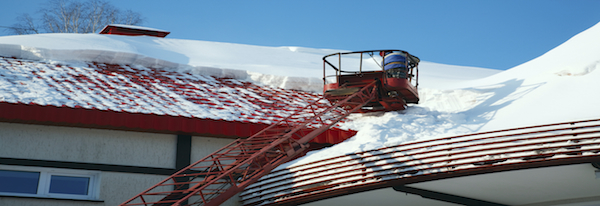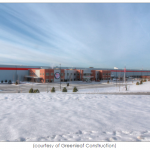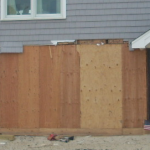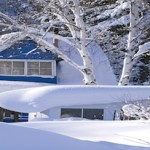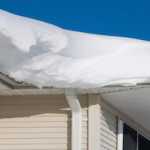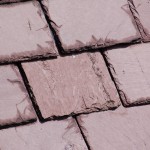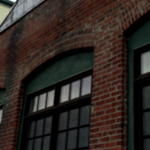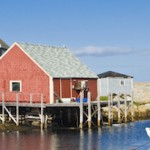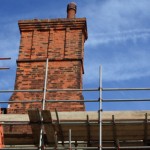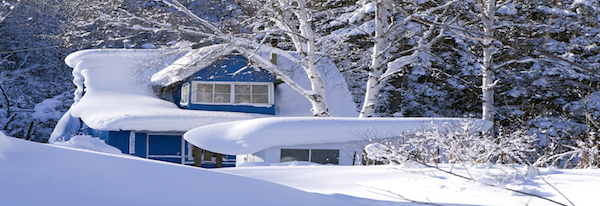
Robert Champagne, principal of Summit Engineering, says that the best way to prevent a roof collapse from snow is to be proactive. A good rule of thumb is that if your roof has more than 2-ft* of snow then it is definitely time to consider finding ways of removing it.
*this is a rough estimate when no information is available to analyze a roof properly.
Common signs of potential roof collapse from snow include:
Commercial Buildings: If sprinkler heads are protruding through ceiling then you may be at risk of a roof collapse. Sprinkler heads are hung from the roof of most commercial buildings, and as a result, would be sagging if the snow load is beginning to put pressure on the roof.
Residential Buildings: It is difficult to tell when it is really cold. In warmer weather, a roof collapse can be preceded by a leak of some sort—look for signs of water damage coming through the ceiling or cracks in the drywall. If you’re able to get into your attic, look for cracked roof joists. Many occupants of collapsed buildings report of hearing cracking sounds prior to the collapse.
What’s the breaking point?
Snow varies in density, so knowing just how much weight 2-ft of snow is putting on your roof isn’t an exact science. However, we suggest property owners assume that every 1-ft of snow is putting about 15lbs per square foot of pressure on their roofs. The amount of pressure can vary significantly, anywhere from as low as 5lbs to 50lbs of weight. It all depends on the density of the snow.
The National Oceanic and Atmospheric Administration (NOAA) presently puts the current weight of snow on the ground at 33lbs per square foot. As a reference, most new buildings in Portsmouth have a design roof snow load of around 40-psf (not including drifting).
How to tell yourself
A simple way to determine the weight of the snow involves taking a piece of PVC pipe and doing the following:
- Push down PVC pipe to the base of the snow for a sample of the snow.
- Then cap it, upright it and let it melt inside the tube.
- When the snow melts, measure the depth of the water. (If you have 8 inches of water in the PVC pipe it equals 41 pounds per square foot and would go up or down with each inch of water by 5.2 pounds. This is a rough estimate figure and should be used with caution)
There is also a special website run by the National Oceanic and Atmospheric Administration that can help you determine the water equivalent of snow pack.
Common causes of roof collapse from snow loads
There is no SINGLE reason for a roof collapse from snow.
While snow is the predominant factor, most roof collapses come as a result of:
- Poor design
- Poor construction
- Lack of maintenance
- Structures built at a time of lacking code requirements
- Insulated roofs of older structures that prevent heat from melting snow and thereby contribute to snow load.
- A combination of those factors.
We have heard of instances where property owners were attempting to remove snow from a roof and ended up piling up the snow on one part of a roof—which ultimately ended up causing it to collapse.
The unprecedented series of storms the region has experienced as of late also increases the chances for snowdrifts building up on roofs. Ice dams are also wreaking havoc.
The anatomy of an ice dam
Ice dams occur because most roofs in New England feature eaves that overhang the structure. When the heat escapes the roof it melts the snow and send the liquid trickling down the roof toward the eaves. Because snow becomes an insulator, the liquid is allowed to remain until it reaches the eaves where heat is no longer keeping it in liquid form. Once the liquid reaches the eaves it begins to freeze and pooling water forms behind it—thereby creating an ice dam.
The pooled liquid can then get underneath roof shingles and begin to wreak havoc in the interior, causing leaks and further water damage.
How to remove snow from a roof
Do not attempt to climb on your roof and remove the snow yourself. There are far too many instances of injuries due to homeowners attempting to clear their roofs themselves, it is just plain dangerous.
If your roof is packed with snow, we recommend reaching out to the following:
- Tree pruning services
- Roofing contractors
- General contractors
All three service types possess the proper equipment needed to safely access a roof. Homeowners who attempt to clear the snow themselves also run the risk of damaging their roof with shovels.
What happens after a roof collapse?
After a roof collapse occurs there is usually a forensic engineer involved in determining what happened. This is usually to determine insurance payouts, adding that an insurance carrier typically will not pay if the roof collapsed due to lack of maintenance.
There is much knowledge to be gained from analyzing collapse, such as: Are building codes properly specifying snow loads in the design of new structures? Is there something for engineers to learn from the collapse?
More often than not, the cause of a collapse has nothing to do with modern building codes.
They are usually a result of poor design, poor construction, lack of maintenance, structures built at a time of lacking code requirements, or a combination of these factors.
After all analysis is said and done, we believe that we will not see modern structures built to code having problems with these snow loads.
Contact us today if you’re worried the snow on your roof could lead to a roof collapse. We’re always happy to help.



